Table of Contents
Definition
Expression tree is a binary tree data structure that can be used to represent mathematical expressions. An expression tree has the following properties:
- Each leaf node is an operand. Example: 1, 72, a, x, y
- The root node and internal nodes are operators. Example: +, -, *, /, ^
- The tree is organized in a way that reflects the order of operations
- The tree can be traversed in various techniques such as inorder, preorder, and postorder traversal
Structure
The expression tree consists of nodes, there must always be a root node to connect the expression together. A node that doesn’t connect with another node is called as leaf node, if it connects with another node then it’s called as internal node or just a node for short.
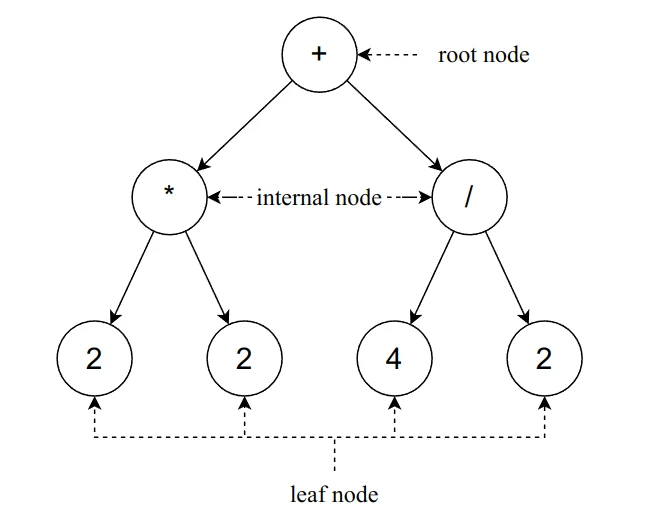
Construction
The construction of an expression tree can be done in various ways, usually using the stack data structure. In this post, we’ll do it without the help of stack.
We’ll have to know operator precedence:
- Parentheses ((…))
- Exponent (^)
- Multiplication and divison (*, /)
- Addition and substraction (+, -)
To begin with, let’s start with a simple expression .
- First, find the operator. In this example, it’s an addition (+)
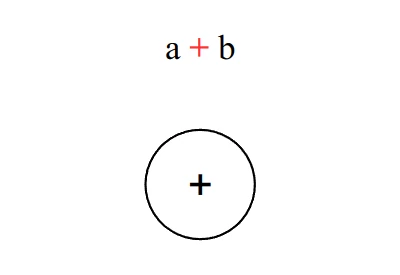
- Find both of the operands and make sure the placement is correct. In this example, for the left leaf and for the right leaf
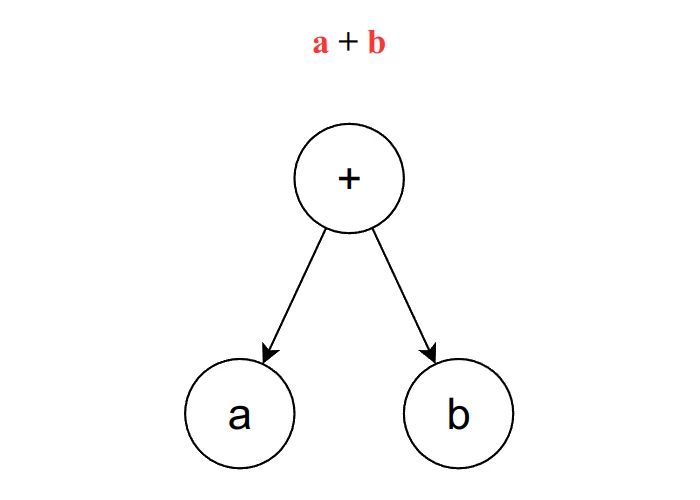
In just 2 steps, we have successfully made an expression tree.
What if there are a lot of operations?
Consider the following expression:
It sure looks very complicated, but we can do this slowly and carefully by separating each operation and assuming “deeper” operations as a variable.
Assuming the following:
Start with getting the first operation for the root node.
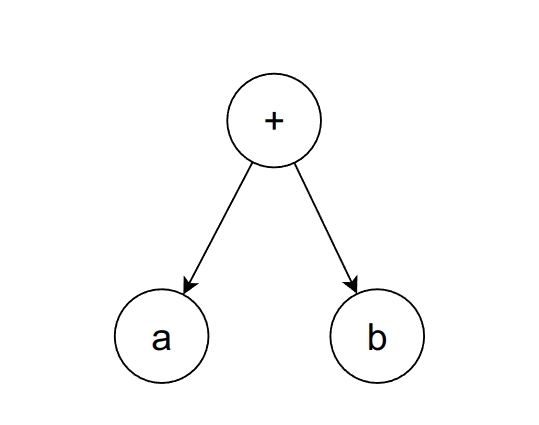
Right after getting the root node, we could start working from left-to-right. Let’s break this down:
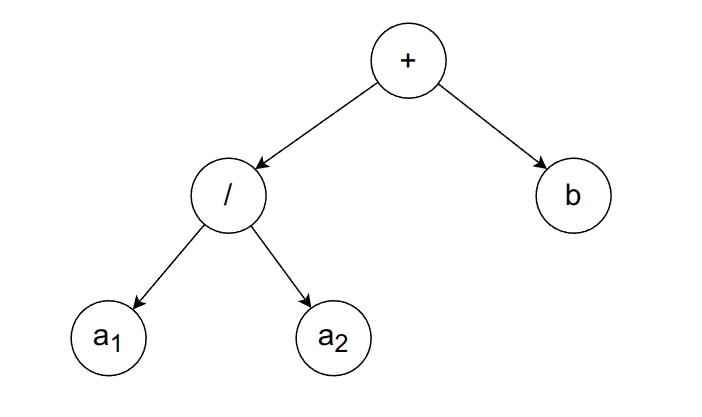
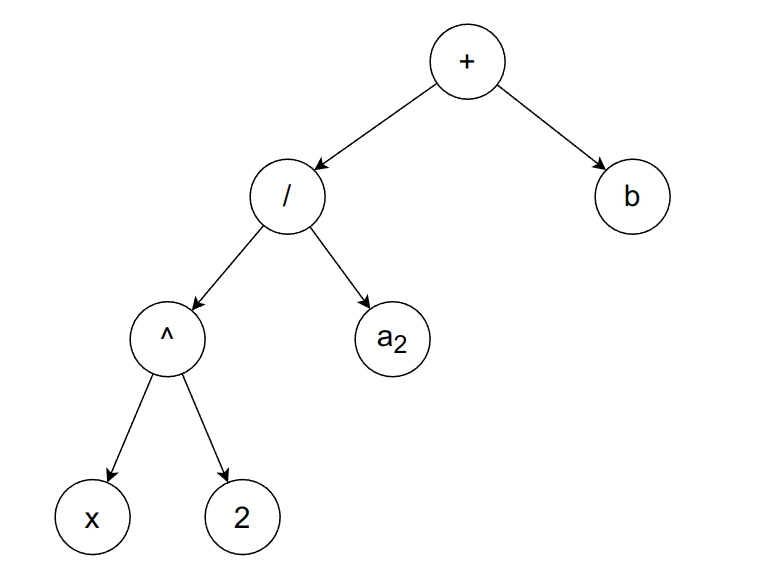
is a substraction of and .
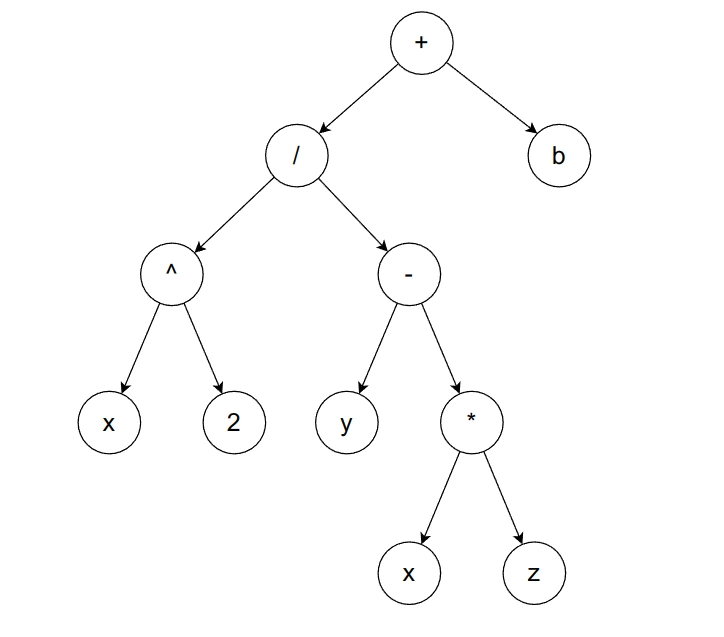
At this point, the process has gotten repetitive. In short, you have to repeat this way until every operation has been included in the tree.
Try to construct the expression tree for by yourself, you may compare yours with the completed tree below:
Are there any other methods?
Yes, just like mentioned earlier, using stack data structure is one of the most common way to make expression trees. Another method is to construct your tree from the bottom by finding the deepest operations first. While there is no right or wrong with any method, you may want to try the others and see which one’s easier.
